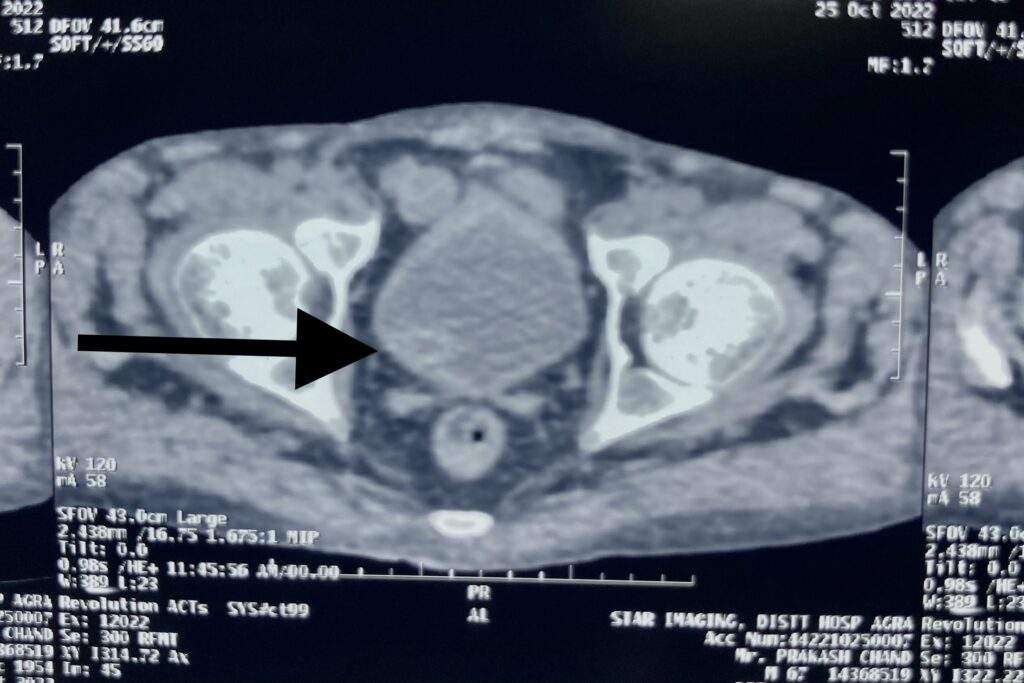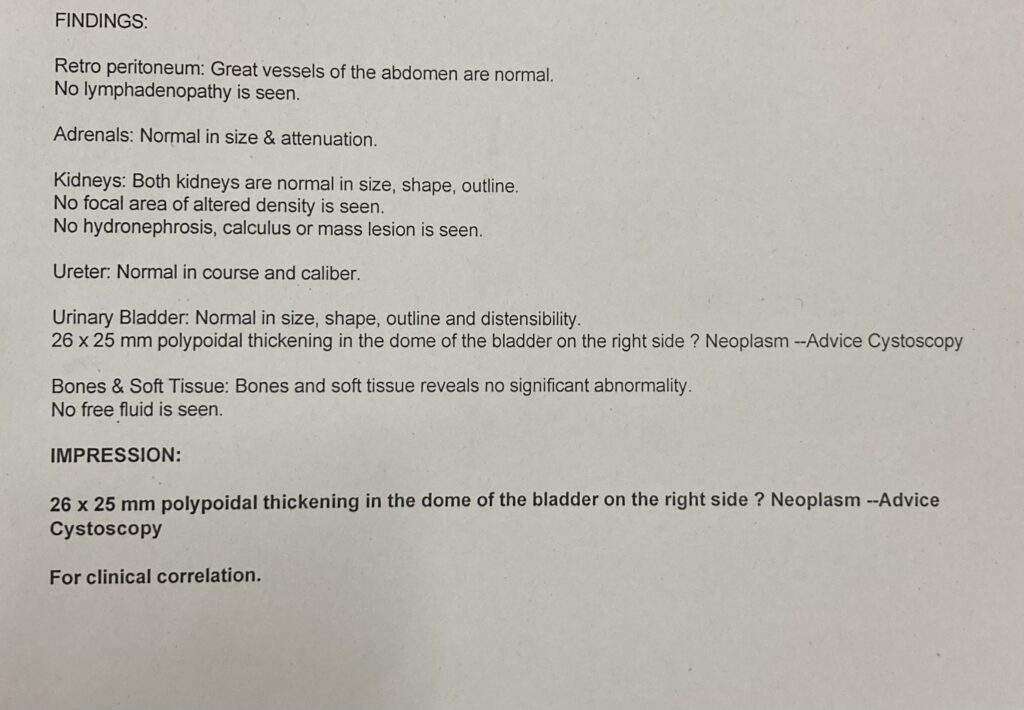Urinary Bladder Cancer
What is Urinary Bladder Cancer?
Urinary Bladder cancer is a common type of cancer that begins in the cells of the bladder. The bladder is a hollow muscular organ in your lower abdomen that stores urine.
Urinary bladder cancer most often begins in the cells (urothelial cells) that line the inside of your bladder. Urothelial cells are also found in your kidneys and the tubes (ureters) that connect the kidneys to the bladder. Urothelial cancer can happen in the kidneys and ureters, too, but it’s much more common in the bladder.
Most bladder cancers are diagnosed at an early stage, when the cancer is highly treatable. But even early-stage bladder cancers can come back after successful treatment. For this reason, people with bladder cancer typically need follow-up tests for years after treatment to look for bladder cancer that recurs.
What are Urinary bladder Cancer types?
There are three types of urinary bladder cancer. Each type is named for the cells that line the wall of your bladder where the cancer started. Bladder cancer types include:
- Transitional cell carcinoma: This cancer starts in transitional cells in the inner lining of your bladder wall. About 90% of all bladder cancers are transitional. In this cancer type, abnormal cells spread from the inner lining to other layers deep in your bladder or through your bladder wall into fatty tissues that surround your bladder. This bladder cancer type is also known as urothelial bladder cancer.
- Squamous cell carcinoma: Squamous cells are thin, flat cells that line the inside of your bladder. This bladder cancer accounts for about 5% of bladder cancers and typically develops in people who’ve had long bouts of bladder inflammation or irritation.
- Adenocarcinoma: Adenocarcinoma cancers are cancers in the glands that line your organs, including your bladder. This is a very rare type of bladder cancer, accounting for 1% to 2% of all bladder cancers.
- Small cell carcinoma of the bladder: This extremely rare type of bladder cancer affects about 1,000 people in the U.S.
- Sarcoma: Rarely, soft tissue sarcomas start in bladder muscle cells.
Healthcare providers may also categorize bladder cancer as being noninvasive, non-muscle-invasive or muscle-invasive.
- Noninvasive: This bladder cancer may be tumors in a small section of tissue or cancer that’s only on or near the surface of your bladder.
- Non-muscle-invasive: This refers to bladder cancer that’s moved deeper into your bladder but hasn’t spread to muscle.
- Muscle-invasive: This bladder cancer has grown into bladder wall muscle and may have spread into the fatty layers or tissues on organs outside of your bladder.
Risk Factors for Urinary Bladder Cancer
- Cigarette smoke: Smoking cigarettes more than doubles your risk of developing bladder cancer. Smoking pipes and cigars and being exposed to second-hand smoke may also increase your risk.
- Radiation exposure: Radiation therapy to treat cancer may increase your risk of developing bladder cancer.
- Chemotherapy: Certain chemotherapy drugs may increase your risk.
- Exposure to certain chemicals: Studies show that people who work with certain chemicals used in dyes, rubber, leather, paint, some textiles and hairdressing supplies may have an increased risk.
- Frequent bladder infections: People who have frequent bladder infections, bladder stones or other urinary tract infections may be at an increased risk of squamous cell carcinoma.
- Chronic catheter use: People who have a chronic need for a catheter in their bladder may be at risk for squamous cell carcinoma.
Symptoms of Urinary Bladder Cancer
Bladder cancer signs and symptoms may include:
- Blood in urine (hematuria), which is painless and may cause urine to appear bright red or cola colored, though sometimes the urine appears normal and blood is detected on a lab test
- Frequent urination
- Painful urination
- Back pain
Diagnosis of Urinary Bladder Cancer
- Urinalysis: Providers use a variety of tests to analyze your pee. In this case, they may do urinalysis to rule out infection.
- Cytology: Providers examine cells under a microscope for signs of cancer.
- Cystoscopy: This is the primary test to identify and diagnose bladder cancer. For this test, providers use a pencil-sized lighted tube called a cystoscope to view the inside of your bladder and urethra. They may use a fluorescent dye and a special blue light that makes it easier to see cancer in your bladder. Providers may also take tissue samples while doing cystoscopies.
If urinalysis, cytology and cystoscopy results show you have bladder cancer, healthcare providers then do tests to learn more about the cancer, including:
- Transurethral Resection of Bladder Tumor (TURBT): Providers do this procedure to remove bladder tumors for additional tests. TURBT procedures may also be a treatment, removing bladder tumors before the tumors can invade your bladder’s muscle wall. This test is an outpatient procedure done under spinal or general anesthesia.
- Magnetic Resonance Imaging (MRI): This imaging test uses a magnet, radio waves and a computer to take detailed images of your bladder.
- Computed Tomography (CT) Scan: Providers may do this test to see if cancer has spread outside of your bladder.
- Chest X-ray: This test lets providers check for signs bladder cancer has spread to your lungs.
- Bone scan: Like a chest X-ray, bone scans check for signs bladder cancer has spread to your bones.
- Biopsies to look for cancer spread.
How do I take care of myself?
About half of all people with bladder cancer have early-stage cancer that’s relatively easy to treat. But bladder cancer often comes back (recurs). People who’ve had bladder cancer will need regular checkups after treatment. Being vigilant about follow-up care is one thing you can do to take care of yourself. Here are some other suggestions from the Bladder Cancer Advocacy Network include:
- Follow a heart-healthy diet: Plan menus that include skinless poultry and fish, low-fat dairy products, nuts and legumes, and a variety of fruits and vegetables.
- Focus on high-fiber foods: Bladder cancer treatment may cause digestive issues and a fiber-rich diet may help.
- Get some exercise: Gentle exercise may help manage stress.
- Connect with others: Bladder cancer often comes back. It’s not easy to have a rare disease that’s likely to return. Connecting with people who understand what you’re going through may help.
A note from Bhavishya Clinic+
If you have bladder cancer, it may help to know about half of all people with the condition receive treatment when their tumors are limited to the inner layer of their bladder wall. For them, surgery to remove tumors means they’re cancer-free. But bladder cancer often comes back (recurs). If you’re worried about recurring cancer, talk to your healthcare provider. They’re your best resource for information on risk factors that increase the chance you’ll have another bout of bladder cancer. They’ll help you stay vigilant about symptoms that may be signs of recurring bladder cancer and be there for you if you need more bladder cancer treatment.


